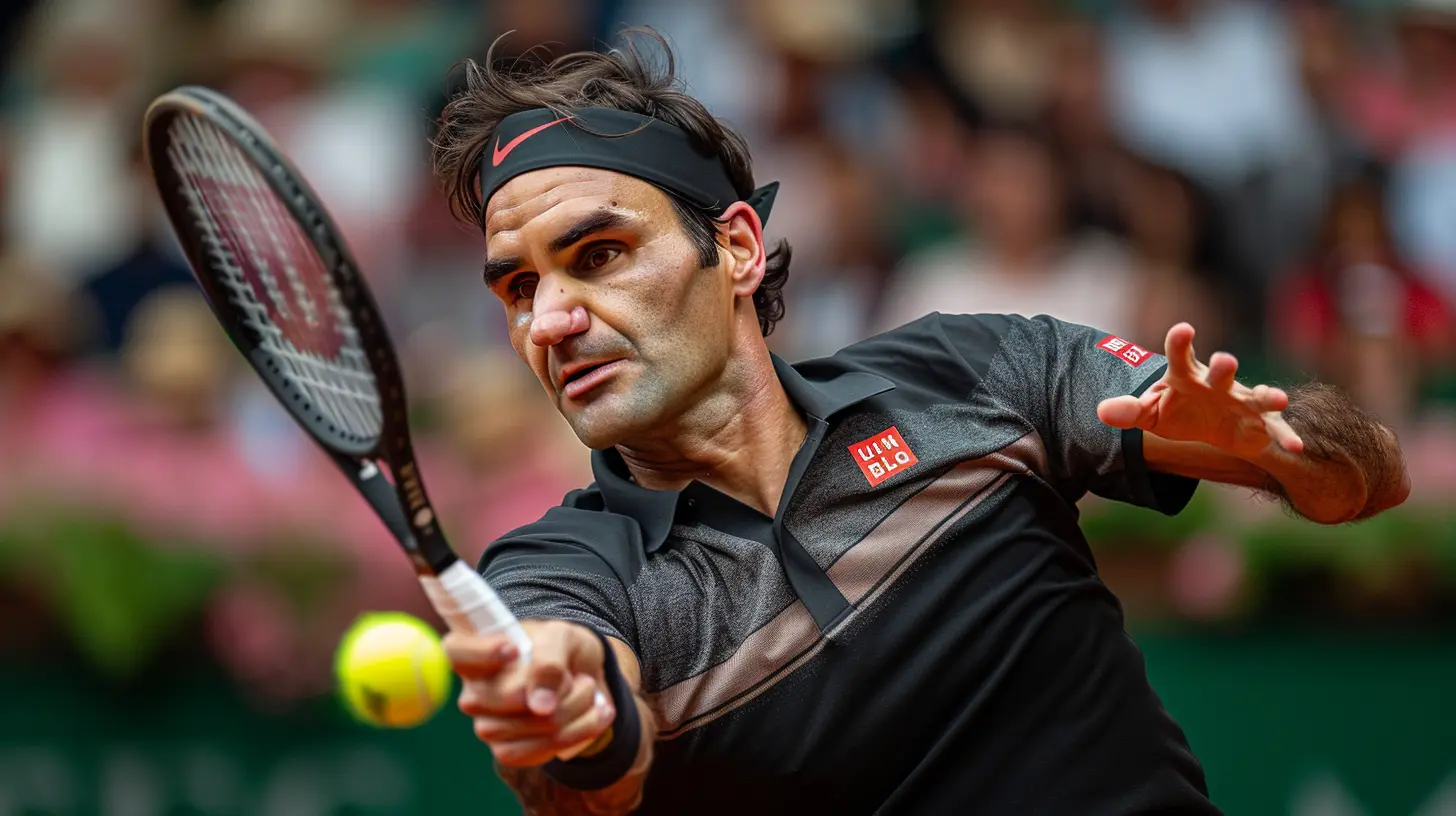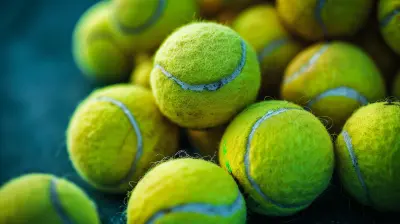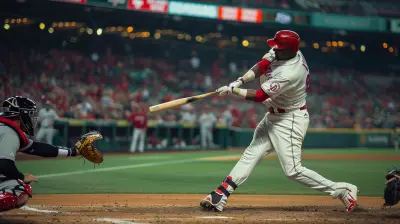How to Develop a Powerful Forehand in Tennis
11 July 2025
The forehand is the weapon of champions. It is the shot that sends your opponent scrambling and gives you the upper hand in rallies. But how do you develop a forehand that is not just decent but powerful? A shot that makes your opponents second-guess their approach?
That’s exactly what we’re going to dive into. Whether you're a beginner or an experienced player looking to refine your stroke, there's always room for improvement. Let's break it down and build your forehand into a shot that dominates the court. 
The Foundation: Proper Technique Comes First
Before you start thinking about power, you need to ensure your technique is rock solid. A sloppy technique might generate speed, but it won’t produce the controlled, heavy shots that actually win points.1. Grip - The Foundation of Control and Power
Your grip is where it all begins. Most powerful forehands come from the semi-western grip, which provides a perfect balance of power, spin, and versatility. Some players prefer the eastern grip, which allows for a flatter shot with more direct penetration. Find what works for you, but if you're new to refining your forehand, the semi-western is probably your best bet.✅ Quick Grip Test
- Place your dominant hand on the handle and slide it slightly under the racket.- If your knuckle and the base of your palm align on the same bevel (3rd or 4th), you're probably gripping it correctly.
2. Stance and Footwork - Power Starts from the Ground
Your legs are your engine. Without proper footwork and stance, your forehand will lack the stability and force needed to create damage.Open vs. Closed Stance
- Open stance: Allows for quick recovery, great for baseline rallies.- Neutral or closed stance: Helps generate more forward momentum, giving you extra power when you step into the shot.
> Pro Tip: Whichever stance you use, always stay balanced. Your weight transfer from your back foot to your front foot is crucial.
3. Backswing and Preparation
A smooth, controlled backswing sets up the shot. When the ball is coming toward you, aim to prepare early. Think of this as loading a spring—you’re coiling your body to unleash maximum force.- Keep your non-dominant hand on the racket while preparing.
- Rotate your shoulders and load your weight on your back foot.
- Keep the racket head slightly higher than the ball to create natural topspin. 
Generating Power: The Real Game-Changer
Now, let’s get to the part you really came for—creating power. A powerful forehand isn’t just about swinging harder. It’s about utilizing your entire body efficiently.1. Engage Your Core and Legs
Your swing doesn’t start in your arm; it starts from your legs and core. Watch the pros—notice how they use their whole body in sync with their stroke? That's the key to effortless power.- Legs drive the motion: Your knees should be bent, and you should push off your back foot.
- Core rotation: As you swing, your core should twist, transferring energy into the shot.
- Racket lag: A slight delay in your racket head (while your body starts rotating) helps generate extra acceleration.
2. Accelerate Through the Ball
Many players mistakenly slow down their swing upon contact. Instead, you need to accelerate through the ball to ensure maximum force is applied. Imagine trying to punch through a target rather than stopping at it.> Think of your racket as a whip, not a hammer. You don’t muscle through the shot—you let the momentum build smoothly and unleash at the right moment.
3. Follow-Through is Everything
A complete follow-through helps control power. Without it, the ball might go wild. After hitting the ball:- Finish the swing over your opposite shoulder for topspin.
- Keep the motion smooth to maintain stroke consistency.
- Allow your momentum to dictate where your racket finishes naturally. 
Timing and Contact Point: Hitting the Sweet Spot
Even if you have a strong stroke, timing is what makes it effective. The best forehands are clean, with the ball making contact at just the right spot.- Ideal Contact Point: Slightly in front of your body, around waist to chest height.
- Early Preparation: The sooner you set up for the shot, the better your chances of hitting a clean, powerful ball.
Not sure if you're timing it right? Try shadow swings or slow-motion drills to feel the correct impact zone. 
Adding Spin for Extra Control
Power is nothing without control, and that’s where topspin comes in. A strong forehand with heavy topspin ensures the ball drops into the court instead of sailing long.- Brush up on the ball: The low-to-high swing path helps create topspin.
- Relax your grip: A rigid grip might prevent the racket from naturally whipping for spin.
> Nadal-style heavy topspin? It's all in the brushing motion and racket head speed!
Drills to Develop a Deadly Forehand
You can read about technique all day, but actual improvement comes from practice. Here are some killer drills to help lock in your muscle memory.1. Shadow Swings
No ball, just your racket. Focus on smooth mechanics, racket lag, and follow-through. 20–30 reps a day build natural motion.2. Wall Hitting for Precision
Hit forehands against a wall, aiming for a target. This improves timing, accuracy, and consistency.3. Topspin Brush Drill
Drop-feed a ball to yourself and focus on brushing up for extreme topspin. Helps develop the "whip" effect.4. Power & Timing Drill
Have a partner feed you deep balls. Focus on stepping in and accelerating smoothly—don’t rush!Common Mistakes to Avoid
Even great players fall into bad habits. Here are some common mistakes that could be robbing you of power:❌ Over-muscling the forehand – Swinging too hard leads to errors. Stay relaxed!
❌ Hitting too late – If you’re catching the ball behind you, you're losing power. Adjust your footwork.
❌ No follow-through – A weak or incomplete follow-through limits both power and control.
Conclusion: Take Your Forehand to the Next Level
Developing a powerful forehand doesn’t happen overnight—but with the right technique, body mechanics, and practice, you’ll see significant improvements. Focus on footwork, racket acceleration, and clean timing, and you’ll soon be hitting shots that make your opponents sweat.So, what’s next? Hit the court and start working on these fundamentals today. The more you practice, the more natural and powerful your forehand will become.
Remember—a great forehand isn’t just about strength; it’s about efficiency and technique. Master that, and you’ll own the court.
all images in this post were generated using AI tools
Category:
TennisAuthor:

Umberto Flores
Discussion
rate this article
1 comments
Blaine McAdams
Great tips! Can’t wait to practice!
August 10, 2025 at 4:35 AM

Umberto Flores
Thanks! Excited for you to practice and improve your forehand!


